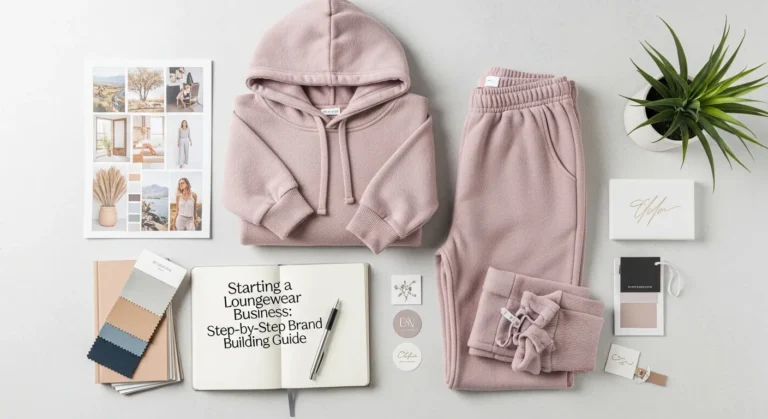Nylon Fabric: Beginner’s Guide to Working With Synthetic Fabrics
Nylon fabric is a popular synthetic material known for its strength, durability, and versatility. It is widely used in clothing, outdoor gear, and home textiles because it combines lightweight feel with excellent resistance to wear and moisture. Understanding how to work with nylon fabric can open up many creative and practical possibilities for sewing projects, whether for beginners or experienced crafters.
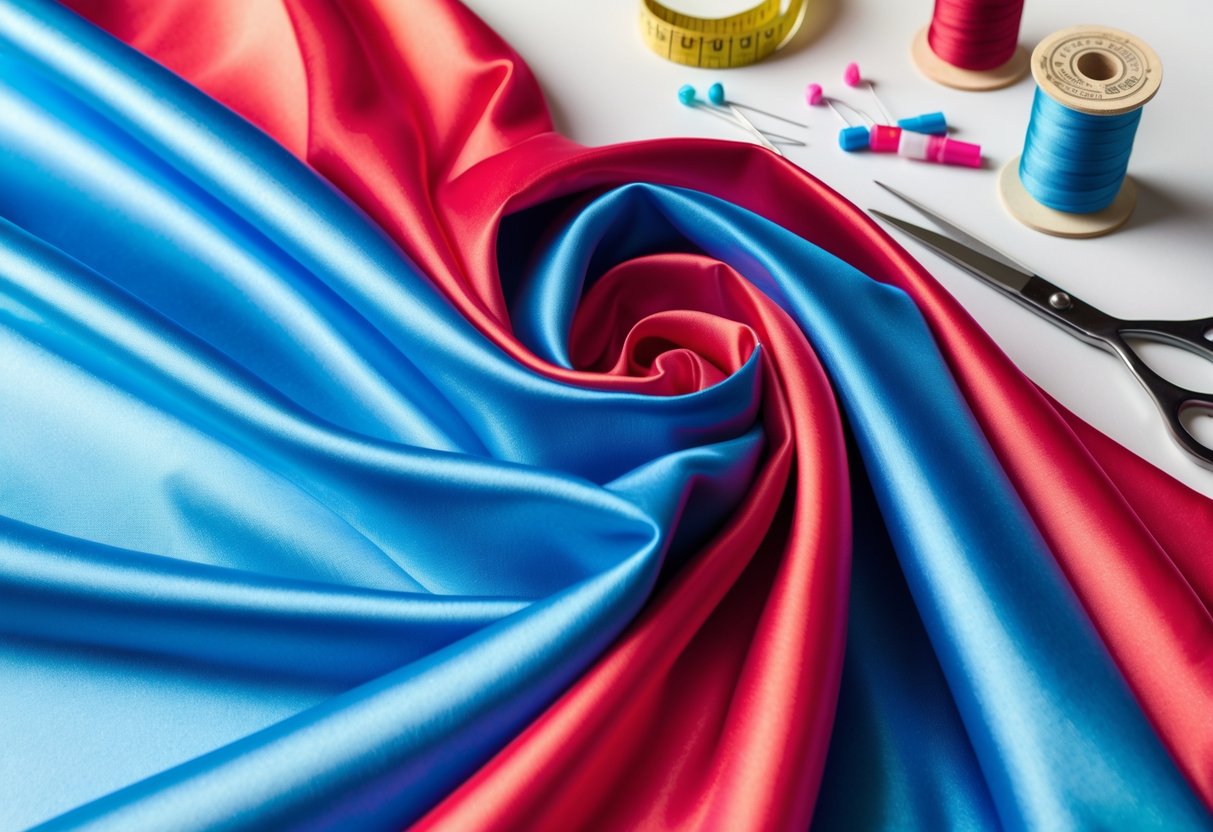
This guide will introduce the basic properties of nylon and explain key techniques for handling and sewing it. With the right tools and methods, working with nylon becomes manageable, even though it can feel slippery or tricky at first. Knowing how to prepare and sew nylon properly ensures projects come out strong and lasting.
By learning about different types of nylon and effective care tips, readers can confidently use this synthetic fabric for a variety of purposes. This knowledge allows for better results when creating fashion pieces, outdoor gear, or home décor items using nylon fabric.
Key Takeaways
- Nylon fabric is durable and moisture-resistant, making it suitable for many projects.
- Proper preparation and sewing tools are important for working with nylon effectively.
- Different nylon types require specific techniques to ensure strong, lasting results.
What Is Nylon Fabric?

Nylon fabric is a type of synthetic material made from man-made fibers. It is strong, elastic, and resistant to wear. People use nylon widely because it works well for many purposes, from clothing to industrial products.
History and Invention of Nylon
Nylon was invented in the 1930s by Wallace Carothers and his team at DuPont. It was the first synthetic fiber to reach commercial success. Originally, nylon was created to offer an alternative to natural fibers like silk.
The earliest use of nylon was in stockings, which became popular during the late 1930s and 40s. Its success led to wider adoption in fabrics and other products. Nylon’s invention marked a major shift in the textile industry, starting the use of synthetic fabrics on a large scale.
Key Properties and Benefits
Nylon fabric is made from polyamide fibers through a chemical process. These fibers are lightweight but very strong.
Key benefits include:
- High strength and durability
- Resistance to abrasion and wear
- Good elasticity, allowing the fabric to stretch without breaking
- Moisture resistance, which helps in damp environments
Nylon also dries quickly and holds its shape well. Because it is synthetic, it does not come from plants or animals, making it different from cotton or wool.
Common Uses of Nylon
Nylon’s strength and flexibility make it useful for many products. Some common uses include:
- Clothing like athletic wear and nylon stockings
- Bags, backpacks, and luggage
- Industrial fabrics, ropes, and nets
- Home items such as carpets and upholstery
Its durability and water resistance are especially valued in applications requiring long wear or exposure to the elements. Nylon fabric is a standard choice when strong, fast-drying textile is needed.
Types of Nylon and Synthetic Fabrics
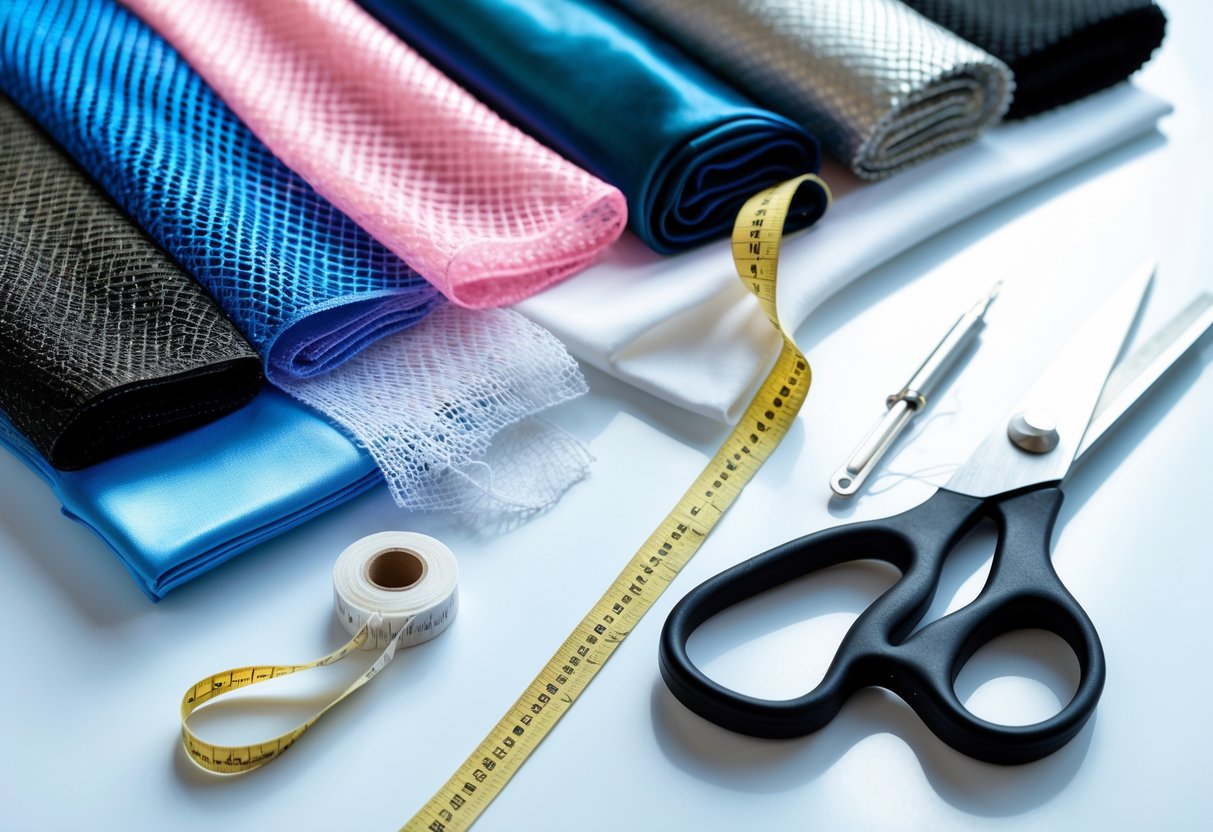
Nylon fabrics come in various forms designed to meet different needs. Some types focus on strength and durability, while others blend nylon with other fibers for added features. Certain weaves add tear resistance, making nylon suitable for tough conditions.
Standard Nylon Variants
Standard nylon fabric is made from polyamide fibers and is known for its smooth surface and durability. It is lightweight yet strong, making it useful for everyday items like jackets, backpacks, and hosiery. This type resists abrasion and holds its shape well even after frequent use.
Standard nylon is often used in clothing that requires flexibility and moisture-wicking, such as activewear. Its chemical resistance allows it to handle exposure to oils and stains better than many natural fibers. Care is simple, with resistance to wrinkles and easy washing.
Specialty Nylon Blends
Specialty nylon blends combine nylon fibers with other synthetic or natural materials to enhance specific properties. For example, nylon can be mixed with spandex to increase stretch and flexibility, ideal for sportswear or form-fitting clothes.
Other blends may add cotton or wool for breathability or warmth while keeping nylon’s durability benefits. These blends improve comfort and performance across different uses. They also help manufacturers create fabrics with unique textures or finishes while maintaining easy care and longevity.
Ripstop Nylon Fabric Overview
Ripstop nylon fabric features a distinctive weave pattern that includes thicker threads at regular intervals. This weave prevents tears and rips from spreading, making the fabric highly durable and resistant to damage.
It is commonly used in outdoor gear like tents, backpacks, and jackets where durability and lightweight fabric are both critical. Ripstop nylon is also water-resistant and can handle rough handling better than standard nylon. The grid pattern is visible and adds texture, making it functional and easy to identify.
Essential Tools and Materials for Sewing Nylon
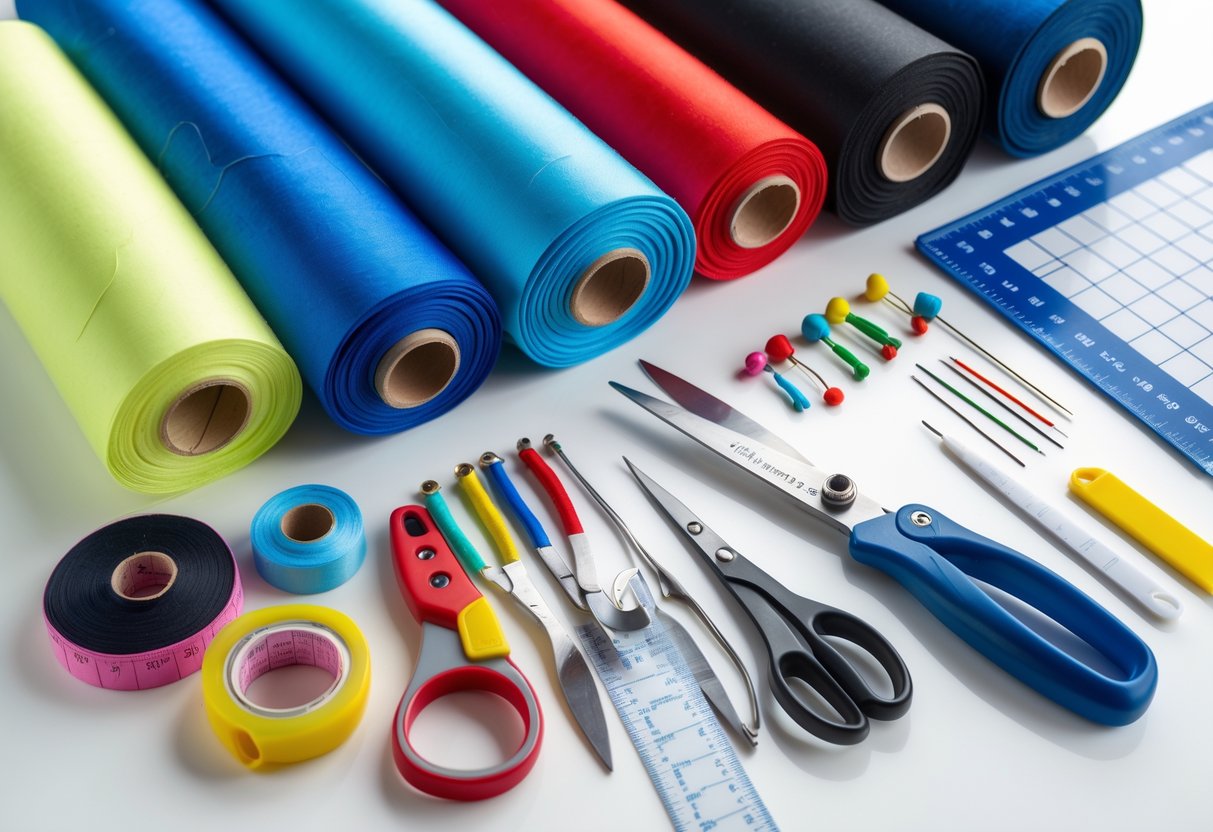
Sewing nylon fabric requires specific tools and careful choices to handle its unique texture and strength. Key components include the right needle and thread, machine settings tailored for synthetic materials, and supportive fabrics and accessories to ensure clean, strong seams.
Choosing the Right Thread and Needle
For sewing nylon, a sharp, fine needle is crucial to avoid snagging. Needles sized 70/10 or 80/12, specifically designed for synthetic fabrics, work best. These needles penetrate without damaging the fabric.
Polyester thread is the preferred choice because it matches the strength and stretch of nylon. It holds seams securely and resists weakening from outdoor conditions or washing. Cotton threads should be avoided since they are less durable with nylon.
Using the correct needle and thread combination reduces fabric holes and seam rupture. Testing on fabric scraps helps confirm needle size and thread type before starting the main project.
Recommended Sewing Machine Settings
Adjusting the sewing machine’s tension is key when sewing nylon. Too tight tension can stretch or damage the fabric, while loose tension creates weak seams.
Stitch length should be slightly longer than for cotton, around 3 to 3.5 mm, to prevent puckering. Straight stitches or narrow zigzag stitches work well by allowing some flexibility.
Using a walking foot or a roller foot helps feed the slippery nylon evenly, preventing fabric bunching or slipping. Slower sewing speeds give better control and more accurate stitching on this challenging fabric.
Fabrics and Accessories to Use
Stabilizing nylon fabric before cutting and sewing helps prevent fraying and distortion. Using interfacing or tissue paper under the fabric can provide extra support.
A rotary cutter and ruler allow precise cuts on slick nylon surfaces. Pressing nylon requires care: use a cool iron and a pressing cloth to avoid melting or scorching.
Finishing raw edges with a serger, overcasting, or zigzag stitch prevents unraveling. Reinforcing stress points like corners with extra stitching improves durability for outdoor gear or garments.
Preparation: Getting Nylon Ready for Sewing
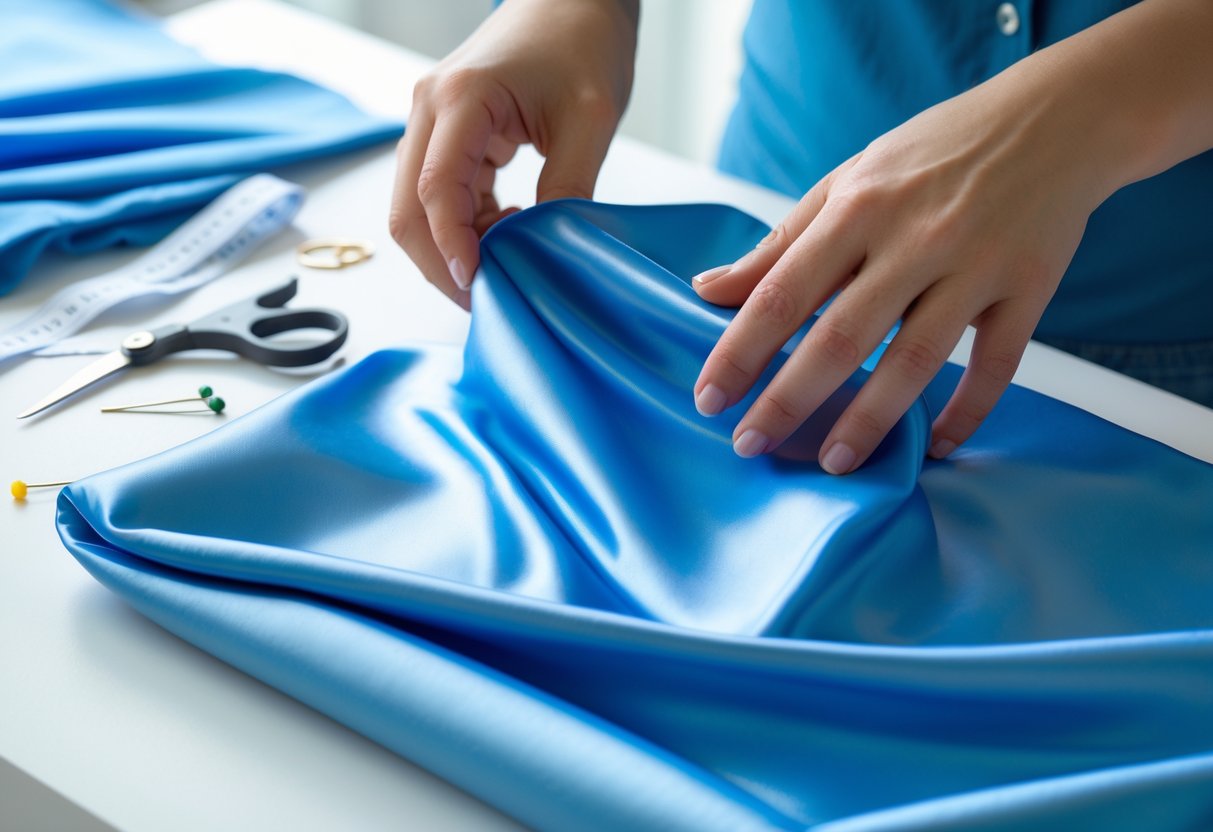
Preparing nylon fabric properly ensures better sewing results and lasting projects. This involves careful washing to control stretch and shrinkage, precise cutting to avoid fraying, and using the right methods to mark and hold the fabric in place.
Washing and Drying Nylon Fabric
Nylon fabric should be washed before sewing to remove any finishes and reduce unexpected stretching. Use cold water and a mild detergent, either by hand or machine wash, as both methods are safe for nylon. Avoid hot water, which can damage the fabric.
Dry nylon on a low heat setting or air dry to prevent shrinking. If ironing is needed to remove wrinkles, use a low temperature and a pressing cloth to avoid melting the fabric. Proper washing and drying help stabilize nylon’s size and texture for easier handling during sewing.
Cutting and Stabilizing Techniques
Cutting nylon requires sharp tools to prevent frayed edges. Use sharp scissors or a rotary cutter designed for fabrics. Avoid using dull blades, as they can cause snagging or jagged cuts.
To stabilize nylon when cutting, lay it flat on a smooth surface and avoid pulling or stretching. Using a cutting mat underneath with sharp tools helps ensure clean cuts. Keeping the fabric taut but relaxed reduces distortion in the final sewn piece.
Marking and Securing Nylon
Marking nylon fabric can be tricky because some tools may not show or can damage the surface. Use tailor’s chalk, water-soluble pens, or light pencil marks that won’t harm the material.
Pins are not effective with slippery nylon. Instead, use clips or double-sided fabric tape to hold pieces securely together while sewing. This prevents slipping and helps maintain precise seam alignment. Keeping nylon stable during sewing is key to clean, durable seams.
Sewing Techniques for Nylon Fabric

Sewing nylon fabric requires attention to stitch choice, fabric control, and edge finishing to create strong and neat seams. Using the right stitch, managing slippery surfaces, and preventing fraying are key steps to follow.
Best Stitches for Nylon
Straight stitches with a short length work best for sewing nylon fabric. Typically, setting the machine to 8-10 stitches per inch helps avoid perforating and weakening the fabric.
Reinforcing seams with topstitching adds strength, especially where the fabric will bear weight or stress. Felled seams or French seams improve durability and create cleaner finishes.
Using polyester thread matches the stretch and strength of nylon better than cotton thread, which can break easily. A sharp, fine needle in size 70/10 suits lightweight nylon, while thicker nylon or webbing requires a size 18 needle to prevent snagging.
Handling Slippery and Stretchy Surfaces
Nylon’s smooth, slippery texture makes it hard to keep steady while sewing. To control it, painters tape holds seams without damaging the fabric like pins can.
Lowering the presser foot pressure reduces fabric shifting during stitching. Stretch the fabric gently with one hand before and after the needle to minimize puckering and ensure even feeding.
Cutting with sharp scissors or a rotary cutter keeps edges clean and accurate. Stabilizing lightweight nylon by placing tissue paper beneath it temporarily can also prevent slipping through the machine.
Managing Fraying and Raw Edges
Nylon tends to fray easily, so sealing raw edges is important to preserve the fabric. Using a hot knife or careful heat from a lighter melts edges to stop unraveling.
Applying fray check liquid is another option to reinforce edges without heat. For seams, finishing with French seams or binding with bias tape keeps edges clean and prevents damage.
Avoid using regular pins near edges; instead, use clips or painter’s tape to prevent unnecessary holes. Proper edge management extends the life and appearance of sewn nylon projects.
Working With Ripstop Nylon Fabric
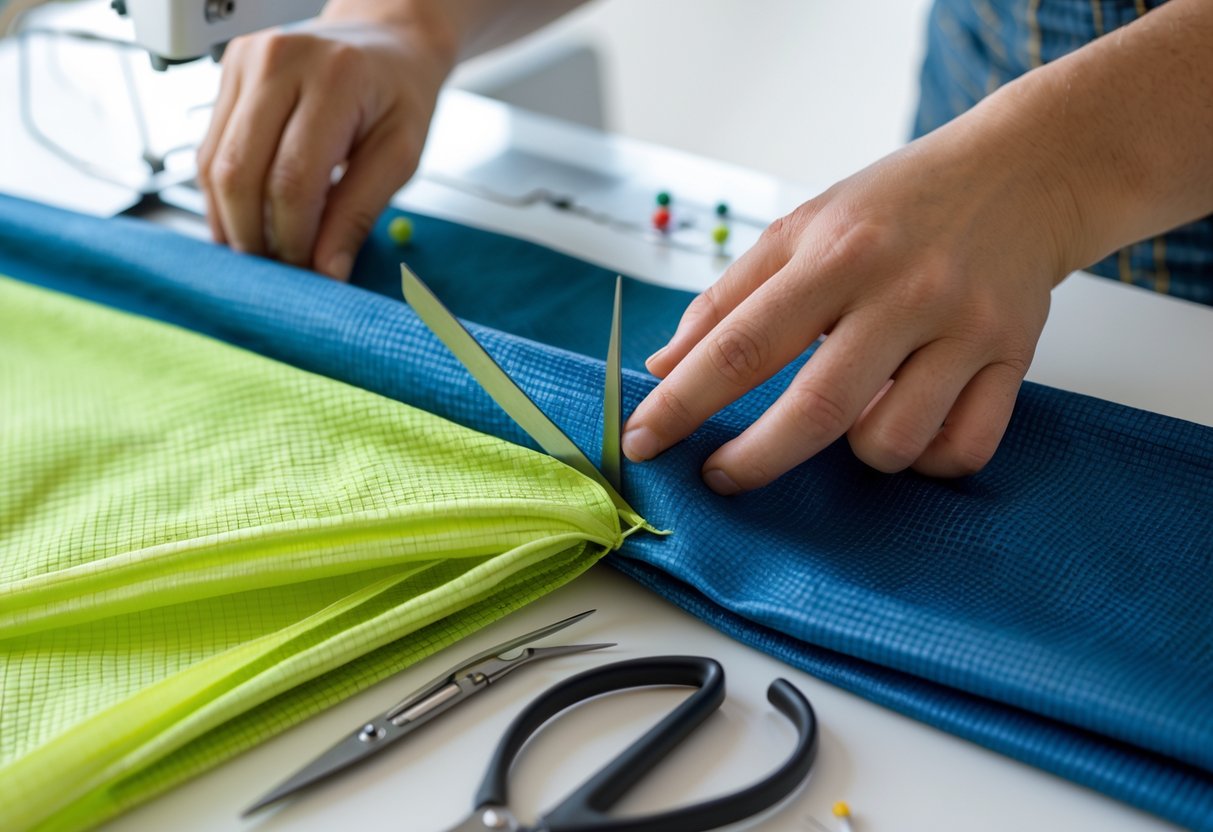
Ripstop nylon fabric is valued for its durability and lightweight feel. Working with it requires careful handling to avoid damage and achieve clean seams. Proper tools and techniques help manage its slippery texture and prevent fraying.
Distinct Qualities of Ripstop Nylon
Ripstop nylon is woven with a special grid pattern made of thicker threads. This grid gives the fabric high tear resistance without adding much weight. It is also windproof, abrasion-resistant, and often water-resistant or waterproof depending on treatments.
The fabric comes in several types, such as plain, water-resistant (with a DWR coating), and waterproof versions coated with polyurethane or silicone. This variety allows users to pick the right fabric for different outdoor and apparel needs.
Its breathability and strength make it common in gear like tents, backpacks, and jackets, where both durability and light weight are important.
Tips for Cutting and Sewing Ripstop Nylon
Cut ripstop nylon with sharp scissors or a rotary cutter to get clean edges. The fabric can slip while cutting, so using weights or clips helps hold it steady. Pinning is best done only in seam allowances to avoid holes.
Use sharp sewing needles sized 70/10 or 80/12 to pierce the fabric cleanly. Polyester or nylon threads are ideal for strength; avoid cotton thread as it breaks easily.
Set stitch length to about 8-12 stitches per inch to prevent fabric perforation. A walking foot or nonstick presser foot helps feed the fabric smoothly and reduce puckering. Lower presser foot pressure if seams ripple.
Guiding the fabric steadily and sewing slowly reduces errors. Finish seams with zigzag or serging to stop fraying, and double-fold hems keep edges clean and durable.
Common Ripstop Nylon Projects
Ripstop nylon suits a wide range of projects, especially those needing lightweight strength. Outdoor gear like tents, tarps, and sleeping bags often use heavy or waterproof ripstop nylon for protection and durability.
Apparel items such as jackets and windbreakers benefit from midweight ripstop with water-repellent coatings. These provide weather resistance and breathability, with stable construction through reinforced seams.
Other uses include backpacks, duffel bags, and lightweight kites or parachutes, which need very fine, coated ripstop nylon for strength without added weight.
For upholstery or outdoor cushions, heavy coated ripstop nylon offers fade resistance and easy cleaning, making it practical for harsh conditions.
Finishing and Caring for Nylon Projects
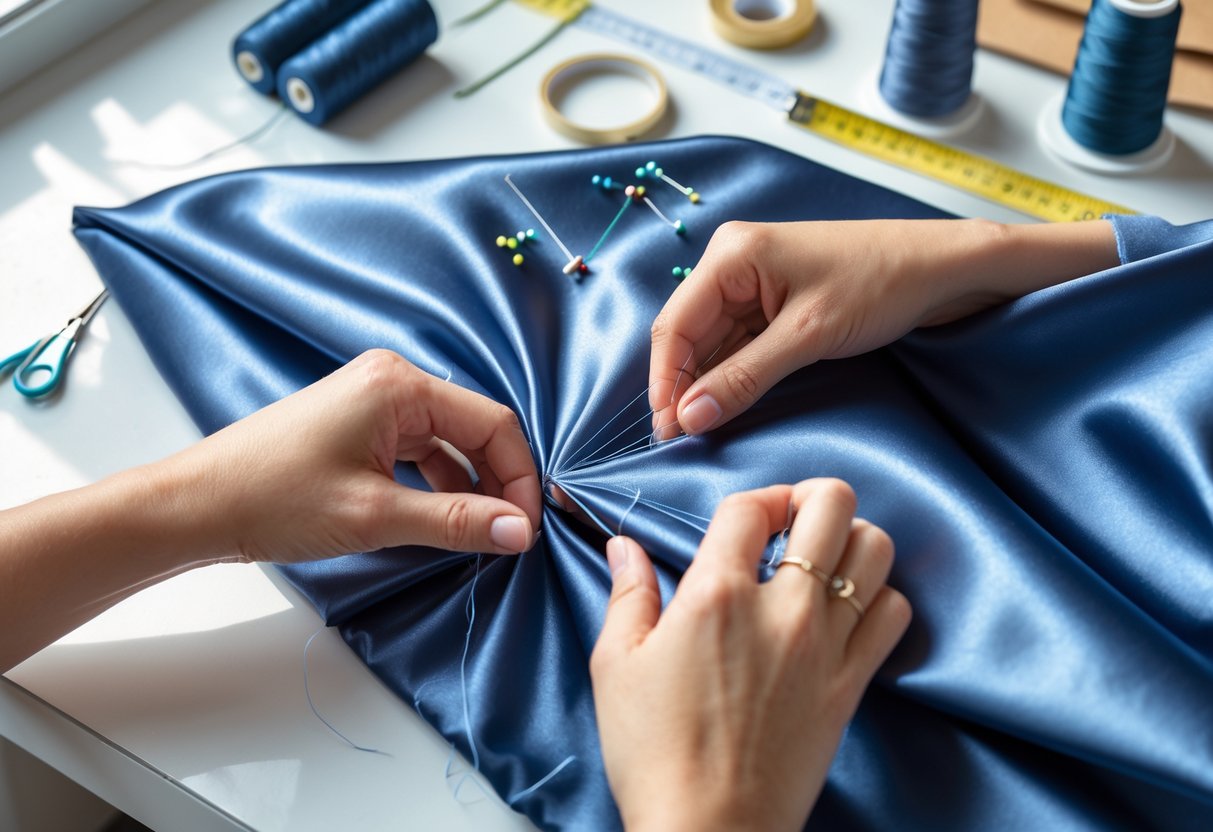
Proper care helps nylon fabric maintain its strength, shape, and appearance over time. Attention to pressing, cleaning, and storage practices ensures that nylon items last longer and keep their original look.
Pressing and Ironing Nylon
Nylon fabric can melt or become damaged if exposed to high heat. To avoid this, always use the lowest heat setting on the iron, often labeled as “synthetic” or “low.” It is important to place a clean cloth or thin cotton towel between the iron and the fabric to protect it from direct contact.
Ironing should be done on the inside of the garment when possible. Move the iron quickly and avoid keeping it in one place for too long to prevent shiny marks or burns.
Steaming is a safer option to remove wrinkles. Holding a steamer or iron’s steam function a few inches away from the fabric relaxes the fibers without direct heat exposure.
Proper Cleaning and Storage
Nylon should be washed in cold water using a gentle detergent designed for synthetics. Avoid bleach, fabric softeners, and hot water, which can weaken the fibers or cause fading.
Separate colors when washing to prevent dye transfer. Use a mesh laundry bag and a gentle cycle for machine washing, or hand wash delicate nylon for better care.
For drying, air drying in a shaded, well-ventilated area is best. Avoid direct sunlight and high heat from dryers to prevent shrinking and damage.
Store nylon items clean and dry in cool places. Hanging with padded hangers or folding carefully helps maintain shape and prevents wrinkles. Avoid moist or sunny spots to reduce the risk of mildew or fading.
Frequently Asked Questions
Nylon fabric stands out for its strength, elasticity, and water resistance. Its care requirements, dyeing methods, and environmental impact differ from other materials. Sewing techniques and fabric weight also play an important role in how nylon performs in different projects.
What are the key characteristics that distinguish nylon fabric from other synthetic materials?
Nylon is known for its exceptional strength and elasticity. It resists abrasion and tearing better than many other synthetic fabrics.
It is lightweight, quick-drying, and naturally water-resistant. These qualities make it ideal for activewear, outdoor gear, and industrial use.
How do you properly care for and maintain nylon fabrics to ensure longevity?
Nylon should be washed in cold or warm water on a gentle cycle. Avoid bleach or harsh chemicals that can damage the fibers.
Air drying is best, but if using a dryer, set it to low heat to prevent shrinking or melting. Ironing directly on nylon is not recommended.
Can nylon fabric be easily dyed, and if so, what is the recommended process?
Nylon can be dyed with acid dyes, which work well because nylon is a polyamide fiber.
Pre-washing the fabric removes finishes that block dye absorption. Dyeing with hot water improves the evenness and intensity of the color.
What are the environmental impacts of using nylon, and how can they be mitigated?
Nylon production uses petrochemicals and consumes a lot of energy, causing pollution and non-biodegradable waste.
Using recycled nylon, like Econyl, helps reduce environmental damage by repurposing waste materials. Sustainable production methods are being developed to lessen the impact.
What are the best sewing practices for nylon fabrics to prevent damage during garment construction?
Use sharp, heavy-duty needles to avoid breaking the thread or fabric. Nylon thread or thick polyester thread is preferred.
Cut nylon carefully with sharp scissors to prevent fraying. A walking foot helps feed the fabric evenly while sewing. Use low heat when pressing to avoid melting.
How does the weight of nylon fabric affect its use in various sewing projects?
Lightweight nylon (under 100 GSM) is soft and breathable, suitable for sportswear, rain jackets, and linings.
Heavyweight nylon (over 200 GSM) is thicker and stronger, ideal for backpacks, tents, and heavy-duty workwear. It resists tears and holds shape better but is less breathable.


